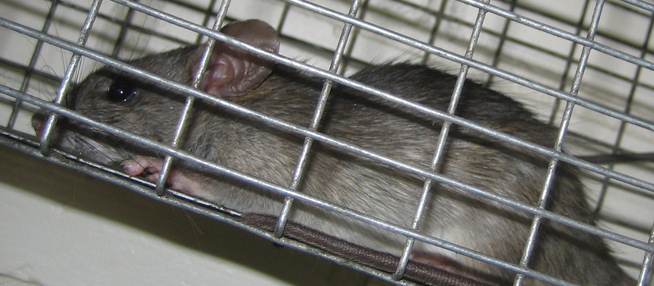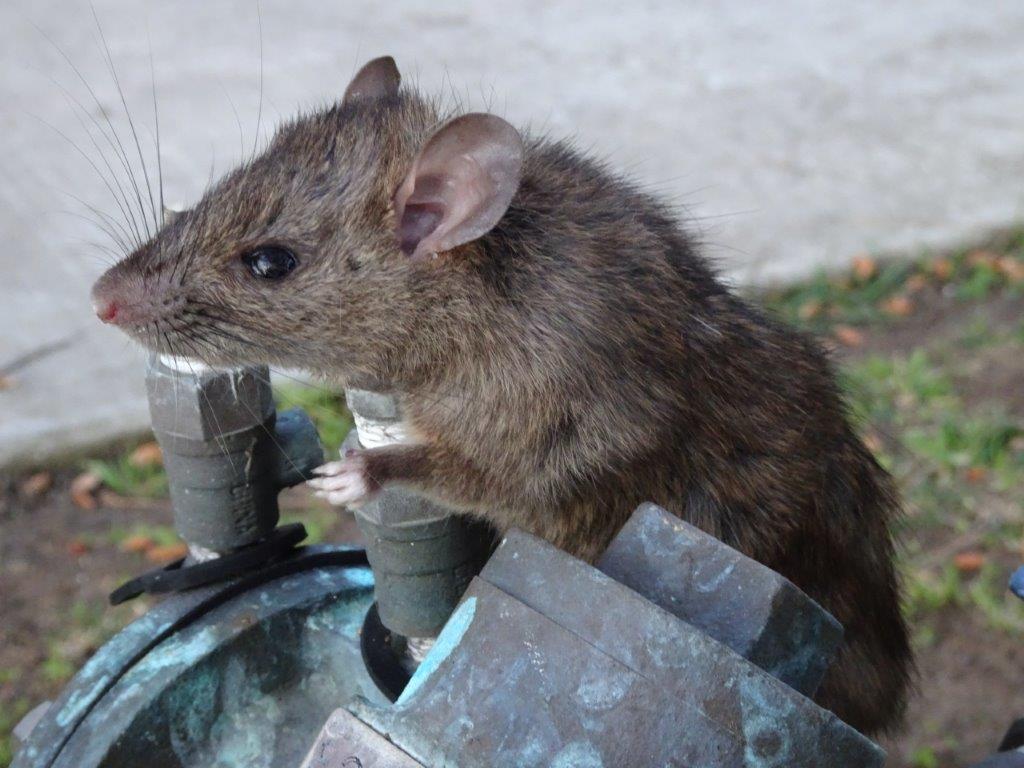Need professional rat help? What does it cost? Go to the home page
Believe it or not, there are so many different types of rat and mouse trap these days, that the market itself can actually be a little confusing. With so many different options being thrown at you, and so many snippets of information, it can be hard to know what to pick. Should you use poisons? How about “humane” live cage traps? You once heard a neighbor talk about using glue traps, what are they? And do they work?
In fact, let's start with those …
Glue Traps
To start with, it's safe to say that these glue traps are NOT humane. They are very sticky strips that are usually placed along the edge of the floor, where it meets the walls, and they aim to stop the rat or mouse in its tracks … quite literally.
The rat or mouse may very well get stuck, even without the need for bait, but then you have a problem on your hands. What are you going to do with it now? You have a rodent that is probably still alive in your hands, and you'll need to find a humane way to kill it, and then dispose of the entire thing. Then you'll need to start all over again, because very rarely will you have just one rat in your home. You will almost always find that one rat means an entire colony of them. They reproduce super fast, and they attract other rats with the pheromones found in their urine too. Just making sure that you know that.
Available as a single sticky pad, or in packs of 2 or 4, they are inexpensive, but they are possibly one of the worst options. We would highly recommend that you do not buy or use these.
Live Cage Traps
There are quite a few different types of these on the market, often classed to be a humane way of trapping and removing animals. In theory, it is a very humane approach. You do not intend to harm the animal in any way. In practice, however, things might be a little different.
When a rat is captured, whether it is via a glue strip trap or a live cage trap, they will struggle, chew, throw themselves around, and whatever else it takes. This is all in a desperate bid for freedom. In the case of glue traps, rats and mice have been known to chew through their own arms and legs to try and break free, and rats have done some serious damage to themselves in live cage traps, both big ones and small ones alike.
On top of this, rats that are relocated / rehomed somewhere in the wild very rarely survive. There's a good chance they'll be killed within a few days, either of starvation because they were unable to find a new source of food, or because they fell victim to a predator. Dogs are often a rat's biggest threats, but cats and humans come close behind too.
That humane approach doesn't seem quite so humane now, does it?
Snap Traps
In reality, although snap traps will result in the rat's death, they are the best approach when you have a rat infestation. There are disadvantages to using these, of course, just as there are with any other method of wild animal removal, but when all of the options are weighed-up, these traps simply come out best. When the right traps are used - rat traps for rats, for example, and mouse traps for mice - they are very effective, killing the critter instantly, and not making too much of a mess either. You know where the animal is when it dies, unlike with poison, and it's also instant, again, unlike with poison. It's humane in the sense that the rat doesn't need to suffer, and it's also the easiest to deal with when you're the one trying to clean up the mess. With poison, the animal will often take weeks to die, and in that time they will have found a nice cosy spot very deep in your home to curl up. Guess who's going to need to find that cosy spot. That's right … You.
There might be a lot of traps to choose from on the market, but snap traps are the best ones. Give them all a try if you like, you'll soon see what we mean …
Go back to the Rats in the Attic home page.

When you have a rat problem, you want it taken care of quickly. These little critters carry many diseases and can cause a lot of damage to your home and property. You want them gone, but you don’t want to hurt them. This may seem like a serious dilemma, but there is no need to panic at all. There are more humane live traps on the market today than ever before in the history of rodent control. Continue reading this article for a look at some of the types of humane rat traps on the market today.
Glue Traps
Glue traps are very simple to use and are highly effective. Essentially, they work by literally sticking the rat to the glue trap by using a very strong adhesive that keeps the rat there on the trap and prevents them from getting away. The adhesive is usually peanut butter scented or some other unique flavor that is attractive to rats. This is a very humane trap because once you see that a rat has been caught, you can let it go free by pouring vegetable oil over the adhesive, which deactivates the adhesive. This trap is perfect for the person who wants to humanely get rid of rats. As an added benefit, these glue traps can stop other small rodents, snakes, and bugs.
Catch and Release Cages
If you have ever seen a cage trap used for some larger pests, then you know how humane these cage traps are. They are built with a door that is held up by a trigger mechanism, that is released when a rat steps on the trigger. The trigger is set to be stepped on when the rat tries to get to the bait at the back of the cage. Because of the wire mesh construction, you will be able to see whether or not you have caught a rat, making it easier to go release them elsewhere. Consider this option if you have any small pets or little children, as these traps will absolutely not harm any animal.
Automatic Traps
There are many types of catch and release traps on the market. Some of the most prevalent are ones designed to catch and hold many rodents at a time. These automatic traps work by having bait in a central location, allowing the rat access into the small hole of the trap, and once a trigger is set off, the rat is blocked into a small compartment that it can’t escape from. Luckily for the rat, this is an entirely harmless process, allowing you the opportunity to release the rat into the wild. These are excellent traps as long as you remember to check them often, as forgetting can cause the rat to die.
Regardless of which humane rat trap you choose, you can be sure that the rats will not be harmed by your option. By humanely removing rats, you can prevent damage and disease to your property while ensuring that you are not endangering any of the rats you may catch.








